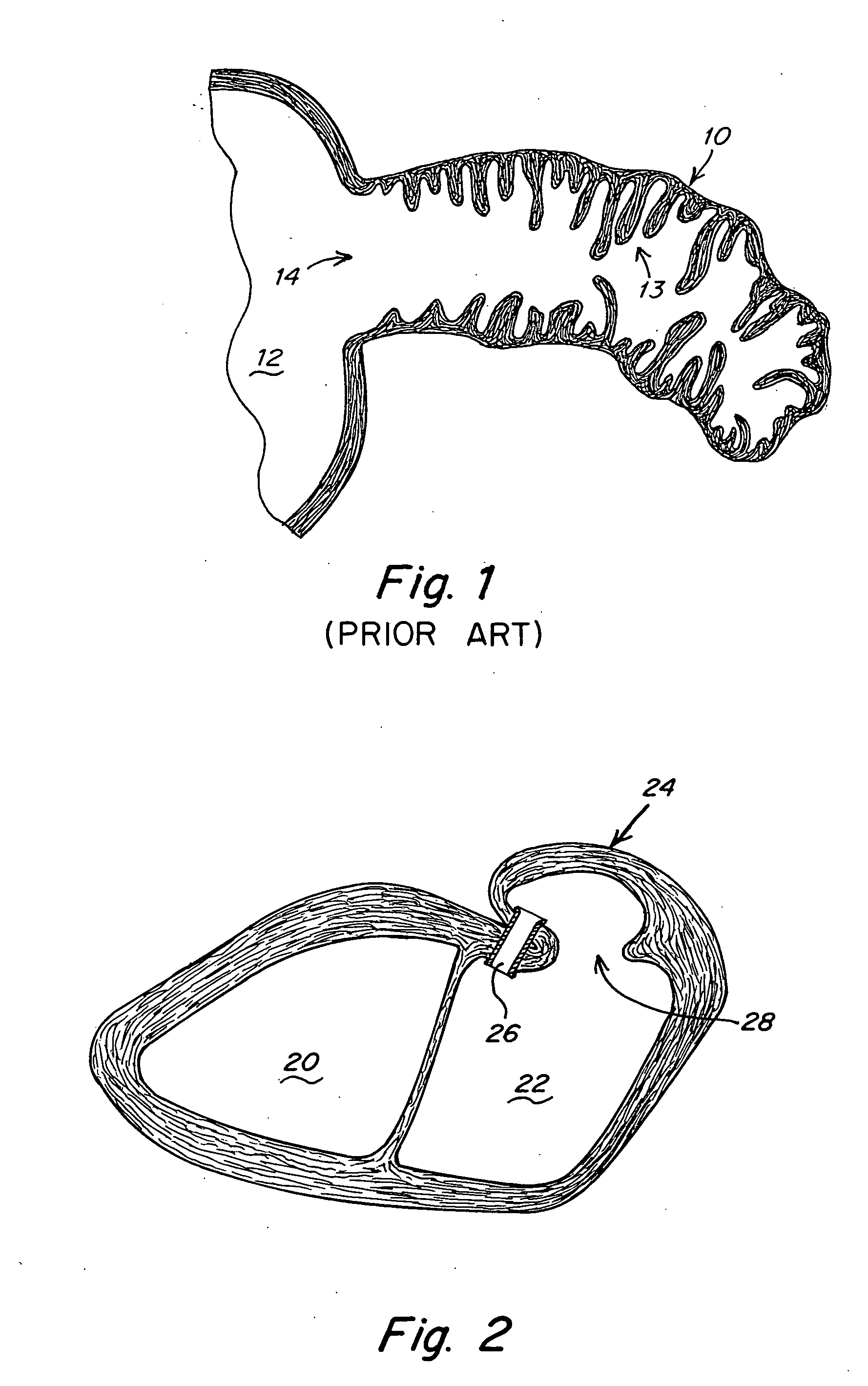Restoration of flow in LAA via tubular conduit
a technology of tubular conduit and flow, applied in the field of restoring flow in laa via tubular conduit, can solve the problems of thrombosis, obliteration and occlusion of subsets, and less effective heart function, so as to reduce the risk of stasis and thrombosis, and increase the blood flow through the laa.
- Summary
- Abstract
- Description
- Claims
- Application Information
AI Technical Summary
Benefits of technology
Problems solved by technology
Method used
Image
Examples
Embodiment Construction
[0013] Referring to FIG. 2, the heart is shown with a right atrium 20 and left atrium 22, with the left atrium including a left atrial appendage (LAA) 24. As shown in FIG. 2, in this embodiment, a conduit 26 is provided between the LAA 24 and the main body of the left atrium 22 to allow blood to flow through the conduit 26 separate from the flow through an ostium 28 of the LAA. The idea in this case is to not restrict the flow, but to enhance blood flow between the LAA and another blood holding or carrying portion, in this case the left atrium, and thereby reduce the likelihood of stagnation and the resulting formation of clots.
[0014] Referring to FIGS. 3A-3E, exemplary procedures include a process in which LAA 24 is constrained in a position close to the left atrial wall by means of clamping (FIG. 3A), stapling (FIG. 3B), or suturing (FIG. 3C). A puncture is then created through the walls of the LAA and LA (FIG. 3D), and the conduit is deployed through the puncture (FIG. 3E).
[001...
PUM
 Login to View More
Login to View More Abstract
Description
Claims
Application Information
 Login to View More
Login to View More - R&D
- Intellectual Property
- Life Sciences
- Materials
- Tech Scout
- Unparalleled Data Quality
- Higher Quality Content
- 60% Fewer Hallucinations
Browse by: Latest US Patents, China's latest patents, Technical Efficacy Thesaurus, Application Domain, Technology Topic, Popular Technical Reports.
© 2025 PatSnap. All rights reserved.Legal|Privacy policy|Modern Slavery Act Transparency Statement|Sitemap|About US| Contact US: help@patsnap.com



